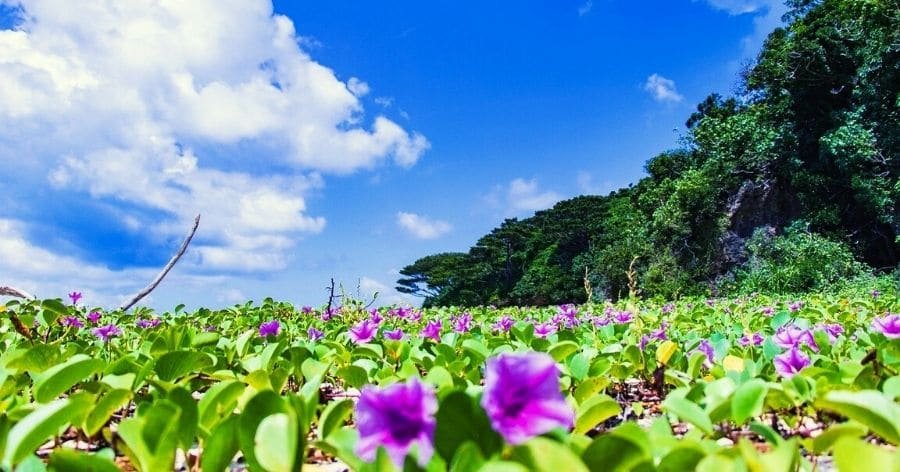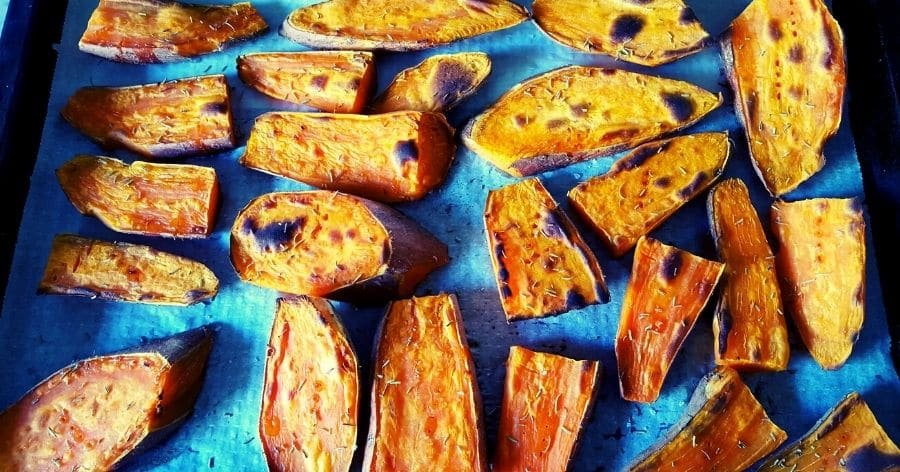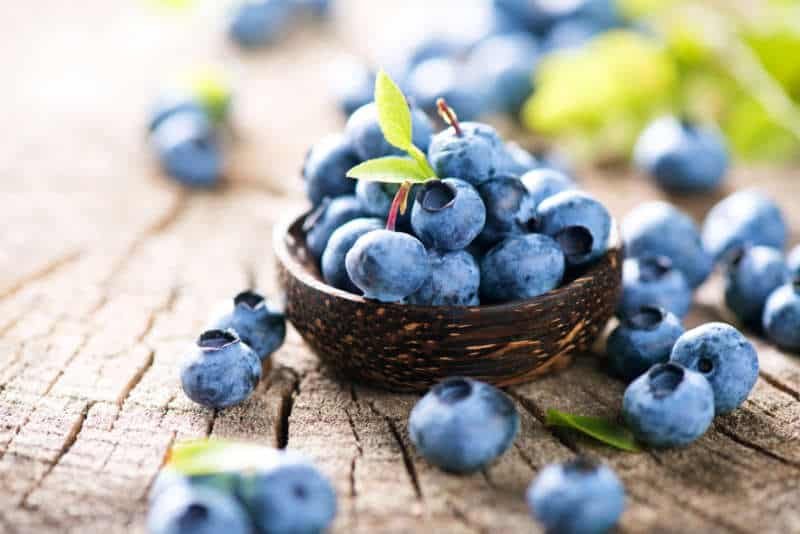The Okinawa Diet and the Secret Power of Sweet Potatoes for a Healthy and Long Life

Okinawa, a tiny island city of Japan, is one of the most remarkable places on earth famous for its diet and health secrets. Along with its enchanting scenery, vibrant culture, and unique cuisine, Okinawa is renowned for being one of the five “blue zones” of our planet.
Blue zones are the hotspots of longevity. These are the places where the number of individuals living beyond 100 years of age without significant health issues is higher than the rest of the world.
Okinawa is home to the healthiest people on the planet and the highest number of centenarians, especially women.
Compared to the other parts of the world, Okinawans enjoy much lower risk of chronic lifestyle and age-related ailments, such as:
- Cardiovascular diseases
- Diabetes
- Cancer
The secret of the exceptional life expectancy and health of Okinawa centenarians is attributed to their lifestyle choices, particularly their dietary habits referred to as the traditional Okinawa diet.
Learn how to live Whole Food Plant-Based
Are you ready to to make the dietary change?
Traditional Okinawa Diet
The eating patterns of the inhabitants of Okinawa have influences from Chinese, Japanese, and Southeast Asian cuisines. The traditional Okinawa diet is distinguished by high-carb, low-calorie, phytonutrient-rich whole food and plant-based products.
Moreover, the Okinawan dietary intake is notable for its significantly limited serving of rice and fish as compared to mainland Japan. Furthermore, sweet potatoes constitute the highest portion of meals.
The traditional Okinawa meals have a predominance of:
- Vegetables, especially sweet potatoes, kombu seaweed, bitter melon, bamboo shoots, daikon radish, Okinawan carrots and mushrooms
- Soy products like miso, tofu, edamame, and natto
- Regional fruits including shikuwasa (a citrus fruit), passion fruit, pineapple, dragon fruit, and star fruit
- Low glycemic grains like whole wheat, barley, and millet
- Herbs and spices such as turmeric, ginger, mugwort, and pepper
- Sanpin tea or jasmine tea
Additionally, the diet has a limited consumption of meat, eggs, dairy products, refined grains, sugar, salt, oil, and alcohol.
While the vegetables and legumes constitute close to 65% of the Okinawan diet and grains about 33%, meats, dairy, alcohol, and other food combined make up only 2-3% of the diet.
Along with the food components, other customs include:
- hara hachi bu (eating until you are only 80% full)
- nuchi gusui (treating food as medicine)
These approaches contribute to the longevity and health of Okinawan people.

Okinawa Diet Versus Western Diet
So far in this article, you might have gained some ideas on how different the Okinawa diet is from a typical western diet, especially in terms of meat and dairy consumption.
It is also interesting to note the abundance of carbohydrates and low amount of proteins and fats in the Okinawa diet while the other popular healthy diets advocate a low-carb and high-protein approach.
Furthermore, the nutritional profile of the Okinawa diet is characterized by the following:
- Low in calories
- High in carbohydrates, primarily due to the consumption of sweet potatoes
- Low in saturated fat due to the minimal use of dairy products and refined sugar
- Low in protein due to the occasional intake of meat and seafood
- High in antioxidants owing to the consumption of vegetables, soy products, and seaweeds
- Low glycemic index because of a low intake of refined grains
In contrast with the Okinawa diet, the western diet can be described as being:
- High in total energy due to high calorie intake
- High in saturated fat owing to red meat, refined oils, dairy products, refined grains, sugary drinks
- Low in fiber due to insufficient intake of vegetables and fruits
- Excess in sodium because of high salt intakes
Further, the prevalence of cooking techniques in the Western diet, like deep frying, grilling, and barbecuing, adds to its nutritional disadvantages. On the other hand, the prevalent cooking methods in Okinawa are steaming, boiling, and stir-frying. These methods help avoid nutrient loss.
Research studies are increasingly associating the western dietary patterns with high inflammation and oxidative stress that eventually cause obesity, hypertension, diabetes, cancer, and other such diseases.
In contrast, Okinawan dietary components have anti-aging and anti-inflammatory properties, thereby decreasing the likelihood of developing these diseases.
Is the Okinawa Diet the secret to a long and healthy life?
This curiosity has led many scientists to study the lifestyle of the people of Okinawa, especially the older population.
Let’s take a look at some of the crucial studies that shed light on the Okinawan secrets to a long and healthy life.
Blue Zones: The Discovery of Dan Buettner
Discovery of Blue Zones by Dan Buettner during his expedition for National Geographic Magazine’s story “Secrets of Long Life” is noteworthy in the recognition of Okinawa as a hotspot of longevity and health.
He illustrated his findings in the books The Blue Zones: Lessons for Living Longer From the People Who’ve Lived the Longest and Blue Zones Solution: Eating and Living Like Healthiest People.
Some of his key revelations related to the Okinawan centenarians’ lifestyle are:
- Eating plant-based meals most of their lives, including sweet potatoes and vegetables
- Consuming meat (primarily pork) on special occasions and only in small amounts
- Including soy products frequently in their food
- Gardens where they grew vegetables and medicinal herbs
- An active lifestyle and a lot of sunlight exposure
- Embracing ‘ikigai’- a strong sense of purpose, ‘moai’- powerful social bonds, and a simple lifestyle
The Okinawa Centenarian Study
Even before Dan Buettner introduced Okinawa to the world as a Blue Zone, the high average life expectancy and lower occurrence of lifestyle diseases in Okinawa inhabitants had caught the attention of scientists.
In 1975, the Okinawa Centenarian Study began under the guidance of Dr. Makato Suzuki to study the aging process and longevity in over 3000 participants. These studies have reviewed the diets, exercise habits, genetics, psychological and spiritual practices, and social and behavioral patterns of the oldest people of Japan.
The Okinawa diet study accredits the nutrient-dense traditional Okinawan diet, social bonds, and some possible genetic factors to be the secret to the exceptional longevity of the Okinawan centenarians.
This study provides many vital insights into the role of the Okinawa diet in the health advantages of Okinawans:
- This diet shares the characteristics of other healthy dietary patterns such as the DASH diet.
- “Low levels of saturated fat, high antioxidant intake, and low glycemic load in these diets are likely contributing to a decreased risk for cardiovascular disease, some cancers, and other chronic diseases through multiple mechanisms, including reduced oxidative stress.”
- “The low-calorie, phytonutrient-rich and nutritionally dense food choices, the healthy eating habits, and high levels of physical activity resulted in a naturally calorically restricted population without malnutrition.”
- “The cultural context wherein the distinction between food and medicine blurs in Okinawa and deeper analyses reveals that many of the traditional foods, herbs, or spices in the Okinawan diet have medicinal properties.”
This study is ongoing and raises concerns about the shifts in the lifestyle of the younger generation that has adversely affected healthy human aging in Okinawa.
So, the organization continues to generate more research to promote the health secrets of the Okinawan centenarians to future generations.
Sweet Potatoes: Hero of the Okinawa Diet
This sweet potato—high in flavonoids, vitamin C, fiber, carotenoids, and slow-burning carbohydrates—is one of the healthiest foods on the planet.
— Dan Buettner
As per the study of Dan Buettner, sweet potatoes made up 67% of the diet of Okinawan centenarians.
The humble sweet potato, scientifically known as Ipomea batatas, is a root tuber grown worldwide. A powerhouse of nutrition, it is a rich source of carbs, fiber, antioxidants, vitamins, and minerals.
As per USDA, 100 gram serving of sweet potato is a rich source of:
- 76 calories
- 20.7 grams of carbohydrates, including starch, sugar, and fiber
- 1.54 grams of protein
- 787 micrograms of Vitamin A
- 16.7 milligrams of Vitamin C
- 30 milligrams of Calcium
- 288 milligrams of Potassium
Besides these, other micronutrients such as Vitamin B, Vitamin E, Manganese, and Phosphorus are significantly present in sweet potato. Moreover, it has almost zero fat content.
Along with a high beta-carotene presence, depending on the variety, sweet potatoes have a high presence of other antioxidants like anthocyanins, flavonoids, and carotenoids.
Although sweet potatoes are high in carbohydrates, they have a low to medium glycemic load when cooked. Researches suggest they do not spike blood sugar levels and hence are safe to be consumed in moderate amounts, even by diabetics.

Health Benefits of Sweet Potatoes
1. Promotes Gut Health
The fiber and antioxidant content of sweet potatoes is great for digestive health. Studies have found that these promote the growth of good bacteria in the gut, supporting bowel movements and preventing conditions like constipation and Irritable Bowel Syndrome (IBS).
2. Boosts Vision and Eye Health
The abundance of beta-carotene (a precursor of Vitamin A) makes sweet potatoes incredible for vision. The deficiency of Vitamin A has been found to cause poor vision as Vitamin A is essential for maintaining the structure of the retina.
The presence of Vitamin C and Vitamin E further promotes eye health by fighting oxidative stress and preventing cataracts.
3. Helps to Manage Diabetes and Weight
As mentioned earlier, sweet potatoes are good for diabetics and people trying to lose weight.
The relatively low glycemic index combined with fiber and other nutrients helps to manage blood sugar levels.
Moreover, the high fiber quantity helps make the stomach feel full for a longer time, thus preventing overeating. At the same time, it helps to keep up with the daily nutrient requirements of the body.
4. Can Lower Cardiovascular Risks
The high antioxidant amounts are frequently being correlated with reduced oxidative stress in research studies.
The antioxidants found in sweet potatoes are known to scavenge the free radicals formed in the body which leads to inflammation. Thus, preventing the development of cardiovascular diseases such as coronary heart disease.
5. Can Protect from Cancer
Though the role of antioxidants in fighting cancer is yet to be completely established, still many studies suggest that plant-based antioxidants are capable of protecting the body from cancer.
Anthocyanins and carotenoids have shown positive results in limiting the growth of cancer cells in many test-tube experiments.
Types of Sweet Potato
There are hundreds of types of sweet potatoes found across the globe, ranging in colors such as white, pink, orange, red, yellow, and purple. Here’s a look into some of the wonderful varieties that you may find in your local markets or supermarket shelves.
Cilembu Sweet Potato
Also known as Honey sweet potato or Ubi Cilembu, Cilembu sweet potato is a variety native to the Cilembu village of Indonesia. This type of sweet potato is known for the velvety and sticky texture of its flesh and honey-like sweet flavor.
Cilembu sweet potatoes are long and cylindrical with a slightly irregular shape and fine root hairs. The skin color is light brown and the flesh is ivory to light brown-orange in color. Upon cooking, the flesh color turns to yellowish-orange.
This variety is relished as a baked or simply roasted snack in various parts of Asia. This variety is used in cooking both savory and sweet items. The baked or boiled flesh can be used in making cakes, fillings, and jams.
One thing to note is that upon boiling or steaming, Cilembu sweet potatoes tend to lose their honey-like flavor. It tastes best when roasted or baked.
Owairaka Red
This red sweet potato, also called Red Kumara, is a variety traditionally grown in New Zealand. This type of sweet potato is known for its distinct red skin and white flesh. The Owairaka sweet potato has been a staple food of the Maori tribe of New Zealand.
Owairaka sweet potatoes have creamy, firm-textured flesh. They can be steamed, baked, or roasted. You can even add them to a salad. Like other varieties, you can use them as a soup base, or in baked dishes like cake.
Beauregard
Developed in 1987 at Louisiana State University, Beauregard sweet potato is the most popular variety grown in the United State of America.
This type of sweet potato is known for its deep orange flesh which is dense, moist, and fine-grained. It is generally large in size and elliptical in shape. Beauregard is an excellent source of beta-carotene.
Upon cooking, it develops a slightly nutty flavor and creamy consistency. It can be baked, boiled, pureed, or mashed and used in making pies, muffins, bread, and casseroles.
Satsuma-imo
Satsuma-imo is the Japanese sweet potato with distinct deep purple-red skin, eaten all over Japan including Okinawa. They are round in shape with tapered ends and come in small to medium sizes.
This type of sweet potato has a creamy pale yellow flesh that turns dark yellow upon cooking and has a nutty flavor like roasted chestnut. It is one of the sweetest varieties of sweet potatoes.
Japanese use it to make tempura, noodles, desserts, and confectionery items. It is also added to soup, curries, and stews.
Boniato
Boniato, also known as Batata, is a variety of sweet potatoes commonly grown in Latin America, especially Cuba. It is medium to large in size and obviate-tubular in shape. The skin is rough and brown with purple patches and the flesh is white with a fluffy, dry texture.
Boniato is less sweet, unlike the other varieties. Latins use it in various savory dishes along with using it as a filling for tacos or cubing and roasting it for bread toppings.
Okinawa Sweet Potato
An Okinawan diet without the mention of the Okinawa sweet potato or Beno imo is incomplete. Moreover, it is gaining recognition as a superfood all over the world.
The striking purple color of its flesh due to huge amounts of anthocyanins is the distinguishing feature of this variety. The skin is brown and the flesh has a slightly dry and velvety texture along with a sweet, earthy flavor.
The Okinawa sweet potato can be used to make everything from savory dishes to desserts.

Photo credit: Vena Johnson
Mashed Sweet Potato Recipe
Are you fascinated by sweet potatoes and ready to include them frequently in your meals?
Here’s a super simple recipe to get you started on your sweet (potato) endeavour.
You’ll Need
- Sweet potatoes (any variety available near you)
- Salt or sea salt
- Pepper
- Herb of your choice (chive, rosemary, cilantro) for topping
- Preheated oven at 400° F
Steps
- Wash the sweet potatoes thoroughly to remove any dirt from the skin and dry it using a kitchen towel.
- Put your sweet potatoes on a baking sheet in the baking tray and poke some holes in them using a fork.
- Roast for 40-50 minutes in the preheated oven at about 400° F or until sweet potatoes look puffed up and get soft inside.
- Once sweet potatoes are properly baked, take them out and let them cool down slightly.
- Peel off the skin, transfer the flesh to a bowl, mash it using a spoon, and add salt, pepper, and herbs to your taste.
And your baked sweet potato mash is ready to relish! You can eat it as it is or with fresh multi-grain bread and enjoy its health benefits.
Enjoy your Okinawa diet discovery!

Author credit: Aakanksha from Contentphilic
Book Your Coaching Session
We offer plant-based coaching sessions for those who want to transition to a Whole Food Plant Based lifestyle, or to those who have already started but are facing challenges. The coaching sessions are aimed at offering motivational and practical advice such as cooking, shopping, family challenges, going out for dinner, overcoming psychological challenges, changing habits, and more. Note: No medical advice is given in the consults.

GET STARTED!
When you transition to a Whole Food Plant Based lifestyle, all sorts of challenges appear on the path. If you are serious about this, you may need to give up some of your favorite foods and flavors and try to replace them for new ones. You may feel limited at first, but you'll be surprised by the variety of new foods and flavors. To help you get started, we've put together a list of 5 simple food tips.
